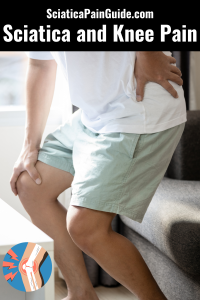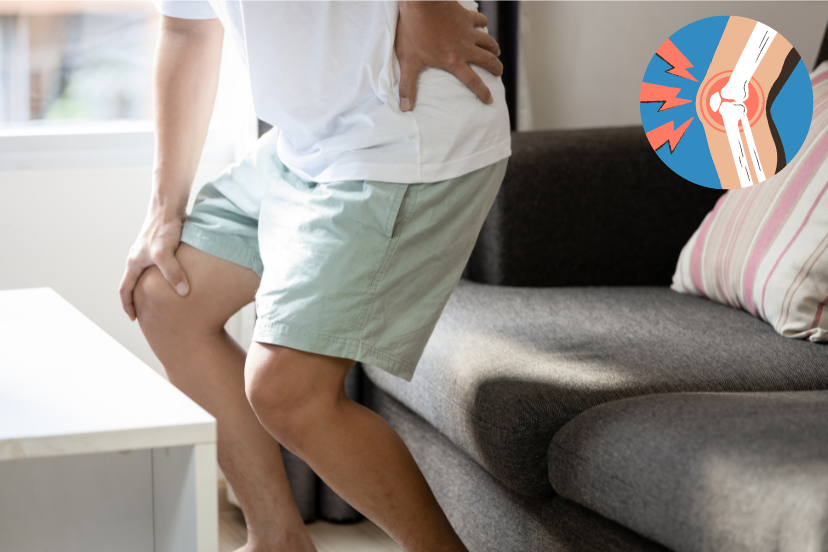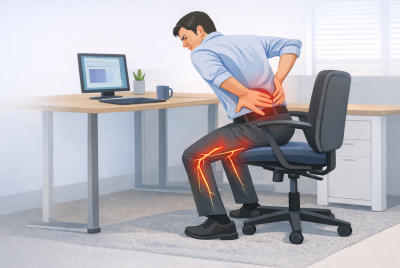Sciatica and Knee Pain
Discover the link between sciatica and knee pain. Learn effective management strategies and tips for relief. Explore now for expert advice! Sciatica and knee pain are two common issues that can greatly affect one’s quality of life. As someone passionate about sciatica health and eager to provide helpful suggestions, I understand the challenges and frustrations that come with it. In this article, I’ll delve into the intricacies of sciatica and knee pain, exploring their relationship, symptoms, management strategies, and prevention tips.
Introduction
Sciatica is a condition characterized by pain radiating along the sciatic nerve, which runs from the lower back down the back of each leg. It typically affects only one side of the body and can range from mild discomfort to excruciating pain. Common causes of sciatica include herniated discs, spinal stenosis, or injury to the spine.
Understanding Sciatica
Symptoms of sciatica may include sharp pain that travels down the leg, numbness or tingling sensations, and muscle weakness. Diagnosis often involves a physical examination, imaging tests such as MRI or CT scans, and sometimes nerve conduction studies. Treatment options vary depending on the severity and underlying cause of sciatica and may include medications, physical therapy, or in severe cases, surgery.
The Connection Between Sciatica and Knee Pain
The connection between sciatica and knee pain lies in the intricate network of nerves in the lower body. The sciatic nerve, which originates in the lower back and extends down the leg, can become compressed or irritated, leading to sciatica. As this nerve branches out to various parts of the leg, including the knee, any issues along its pathway can manifest as knee pain. Therefore, individuals experiencing sciatica may also notice discomfort, numbness, or weakness in the knee area, highlighting the interplay between these two conditions.
Managing Sciatica and Knee Pain
Managing sciatica and knee pain often involves a multifaceted approach. Lifestyle changes such as maintaining good posture, avoiding prolonged sitting or standing, and using proper lifting techniques can help alleviate symptoms. Additionally, specific exercises targeting the core and lower back muscles can improve strength and flexibility, reducing pressure on the sciatic nerve.
Prevention of Sciatica and Knee Pain
Prevention is key to minimizing the risk of developing sciatica and knee pain. Practicing good posture, staying active with regular exercise, and maintaining a healthy weight can all contribute to spinal health and reduce the likelihood of nerve compression. Stretching and strengthening exercises targeting the muscles supporting the spine can also help prevent future issues.
Seeking Professional Help
If symptoms persist or worsen despite self-care measures, it’s essential to seek medical attention. A healthcare provider can evaluate the underlying cause of sciatica and knee pain and recommend appropriate treatment options. These may include medications such as anti-inflammatories or muscle relaxants, physical therapy, or in severe cases, surgical intervention.
Tips for Living with Sciatica and Knee Pain
Living with sciatica and knee pain can be challenging, but there are strategies to manage symptoms and improve quality of life. Firstly, maintaining proper posture and avoiding prolonged sitting or standing can alleviate pressure on the spine. Incorporating regular exercise, such as low-impact activities like swimming or walking, can strengthen muscles and reduce pain. Utilizing ergonomic furniture and supportive footwear can also provide relief.
Furthermore, practicing relaxation techniques like deep breathing or meditation can help manage stress, which can exacerbate pain. Applying heat or cold packs to the affected area can alleviate discomfort, while over-the-counter pain medications may provide temporary relief. Seeking support from friends, family, or support groups can also provide emotional support and coping mechanisms.
Finally, considering complementary therapies such as acupuncture or chiropractic care, under the guidance of a healthcare professional, can offer additional relief. Remember, finding the right combination of strategies may take time, but with perseverance and support, it’s possible to improve daily functioning and overall well-being.
Frequently Asked Questions (FAQs)
Can sciatica cause knee pain?
Yes, sciatica can cause knee pain. The sciatic nerve branches out to various parts of the leg, including the knee. When the nerve is compressed or irritated, it can lead to pain, numbness, or weakness in the knee area. This is why knee pain is a common symptom experienced by individuals with sciatica.
What exercises can help alleviate sciatica and knee pain?
Exercises focusing on strengthening the core and lower back muscles, as well as stretching the hamstrings and hip flexors, can help alleviate symptoms of sciatica and knee pain. Yoga, Pilates, and specific physical therapy exercises tailored to individual needs are also effective in improving flexibility, reducing nerve compression, and promoting overall spinal health.
When should I see a doctor for sciatica and knee pain?
If symptoms persist or worsen despite self-care measures, or if you experience severe or progressive weakness or numbness, it’s essential to seek medical attention promptly.
Are there any lifestyle changes that can help prevent sciatica and knee pain?
Yes, maintaining good posture, staying active with regular exercise, and maintaining a healthy weight can help prevent sciatica and knee pain. Avoiding prolonged sitting or standing, using proper lifting techniques, and incorporating stretching and strengthening exercises targeting the core and lower back muscles can also contribute to spinal health and reduce the risk of nerve compression.
What are some alternative therapies for managing sciatica and knee pain?
Alternative therapies such as acupuncture, chiropractic care, and massage therapy may provide relief for some individuals with sciatica and knee pain. Additionally, techniques like heat therapy, cold therapy, and transcutaneous electrical nerve stimulation (TENS) can help alleviate discomfort. It’s essential to discuss these options with a healthcare provider to ensure they are safe and effective for your specific condition.
Conclusion
In conclusion, managing sciatica and knee pain requires a multifaceted approach that addresses both symptoms and underlying causes. By understanding the relationship between the two conditions and implementing appropriate lifestyle changes, exercises, and treatments, individuals can find relief and improve their quality of life. Seeking professional help when needed and incorporating preventive measures can also play a crucial role in minimizing the risk of recurrence and long-term complications. While living with these conditions can be challenging, with perseverance and support, it is possible to effectively manage symptoms and regain control over daily activities and overall well-being.
Disclaimer
This article is for informational purposes only and is not a substitute for professional medical advice, diagnosis, or treatment. Always consult with your healthcare provider before starting a new exercise or stretching routine, especially if you have existing back or nerve conditions.
👉 Explore more:





